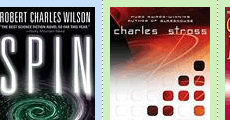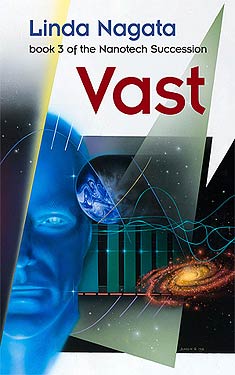
Added By: Administrator
Last Updated: Administrator
Vast
| Author: | Linda Nagata |
| Publisher: |
Mythic Island Press, 2010 Gollancz, 2001 Bantam Dell Publishing Group, 1998 |
| Series: | Nanotech Succession: Book 3 |
|
1. The Bohr Maker |
|
| Book Type: | Novel |
| Genre: | Science-Fiction |
| Sub-Genre Tags: | Nanotechnology Space Opera Space Exploration |
| Awards: | |
| Lists: | |
| Links: |
|
| Avg Member Rating: |
|
|
|
|
Synopsis
Aboard Null Boundary, a giant starship thousands of years old, four survivors of an ancient alien war are making a desperate journey: Lot, son of a fiery prophet and carrier of an insidious virus that spreads a cultlike religious mania among those it infects; Urban, Lot's boyhood friend from the city of Silk, and a man in search of challenge and adventure; Clemantine, cast adrift when her world was destroyed, and yearning for revenge; and Nikko, sometimes a living man, but always the ship's disembodied mind.
They are bound for unknown territory. Ahead of them loom vast, lightless clouds of dust and gas where stars are born, and where the alien Chenzeme are believed to live. The Chenzeme are an enigmatic race whose automated warships have ravaged the living worlds of the galaxy's Orion arm for millions of years. But why? Null Boundary's crew is driven to find out--though in their quest to discover the source of the Chenzeme, they must also explore the terrible truth of their own past, the meaning of revenge, and the price each one of them is willing to pay for survival. --This text refers to an out of print or unavailable edition of this title.
Excerpt
Point zero: initiate.
A sense kicked in. Something like vision. Not because it emulated sight, but because it revealed. Himself: Nikko Jiang-Tibayan. An electronic pattern scheduled to manifest at discrete intervals. Nikko Jiang-Tibayan. He'd been an organic entity once. Not now.
Point one: identify.
Personality suspended on a machine grid: He is the mind of the great ship, Null Boundary. His memories are many, not all accessible. He's locked much of his past away in proscribed data fields. He interrogates his remaining inventory, seeking an explanation. It comes in an amalgam of cloudy scents: the clinging stink of living flesh parasitized by aerobic bacteria. All defenses down. "Don't be sad, my love," she whispers. "Whatever the cost, you know we had to try."
He explores no farther.
Point two and counting: status check.
A scheduled mood shift floods his pattern with easy confidence. He confirms that Null Boundary has long ago reached maximum velocity, four-tenths lightspeed. The magnetic scoops have been deactivated; the solenoids folded to a point piercing the increasingly thick interstellar medium. Duration? Over two centuries ship's time have elapsed since Null Boundary left Deception Well.
Two more centuries.
His past has become unconscionably deep for a man who'd been condemned to die at the age of thirty standard years. Still, death is never far off.
There are four telescopes mounted on tracks around the ship's hull. When two or more are fixed on the same object their optical signals can be combined, creating an effective lens aperture far greater than any individual scope. At least two lenses are continuously fixed on the alien vessel that has hunted Null Boundary for 150 years.
It's a Chenzeme courser, an automated warship designed by a race that vanished millions of years before the human species even came into existence. It first appeared when Null Boundary was less than fifty years out of Deception Well. Then, it was moving at close to thirty-nine percent lightspeed, on a course that would take it toward the star cluster called the Committee--opposite to Null Boundary's vector. Nikko watches its fleeting image, wondering if it will manage to get past the defenses of the human settlements there.
Nikko knows little about the Chenzeme, but he knows this much: Their ships are not powered by conventional physics. The old murderers learned to tap the zero point field, that all-pervasive sea of energy where particles and antiparticles engage in a continuous dance of creation and annihilation. It's a deadly talent. With the zero point field to power their ships and guns, each Chenzeme vessel has far more energy at its command than any human installation. Their gamma ray lasers can burn away the atmosphere of a living world. Nikko has seen it happen.
A twinge of pain, like the tenderness of a half-forgotten wound, warns him away from memories he does not want to awaken. It s enough to know the Chenzeme will not be beaten until the frontier worlds own the zero point technology too.
Yet even for the old murderers, energy does not flow in infinite quantity. To catch Null Boundary, the courser would need to swing about and accelerate--a huge investment of both time and energy that can gain it only a very tiny prize. So that first time Nikko sees it, he knows it will ignore him to push on toward the inhabited worlds of the Committee. He has no reason to think he will ever see it again. He aims the ship's prow at the natural navigation beacon of alpha Cygni, a white-hot giant star that blazes against a background of dark molecular clouds--and he pushes on, in the direction called swan, where the Chenzeme warships seem to originate. He has set out to find their source, and he will not be distracted. Like a tortured man stumbling vengefully toward his tormentors, he has to know why.
A century and a quarter later, the courser reappears in Null Boundary's telescopes, approaching obliquely, far to the stern.
Now it has closed to 21.6 astronomical units--some three billion kilometers behind them. It's a luminous object, agleam with a white light generated by the membrane of the philosopher cells that coats its needle-shaped hull.
Human ships and human worlds were not the original targets of the Chenzeme, but their automated ships have proven adaptive. So Nikko has adapted too. He cannot outrun the courser or match its guns, but on Null Boundary's hull he has grown his own layer of Chenzeme philosopher cells, forever dreaming their simulated strategies of war and conquest.
The cells are an intellectual machine. Not so much a mind, as a billion dedicated minds in competition, gambling their opinions. Approval means more and stronger connections to neighboring cells. Disapproval means an increasing isolation. Links are made and shattered a thousand times a second and long-chain alliances are continuously renegotiated. Consensus is sought but seldom found.
This is the clumsy system that guides the Chenzeme warships. Nikko thinks on it, and he doesn't know whether to laugh or to weep in terror.
He suspects he has done both ten thousand times before. It's been twenty-two years since he learned to live within the skin of his enemy. Null Boundary's hull has gleamed white all that time, a skin-deep Chenzeme masquerade.
If nothing else, this ruse has bought time. Though the courser has not been persuaded to turn away, it seems unsure, as if its instincts have been confused by Null Boundary's metamorphosis. Seventeen years ago it ceased to accelerate. Yet because its velocity is slightly greater than Null Boundary's, the gap between the two ships continues to narrow. In another 125 days Null Boundary will fall within range of its gamma ray laser.
That is Nikko's deadline. He must convince the courser of his authenticity before then, and persuade it to leave them alone. In the ship's library, an army of subminds is dedicated to the problem, interpreting and reinterpreting every record of Chenzeme communication to uncover all identifying codes. Nikko has used the results in repeated attempts to contact the courser, but to no effect--it has never answered his radio hails.
He adds one more submind to stew upon the problem while constructing a Dull Intelligence to continue the observations. He will be unable to do so himself, as his present existence is limited to ninety seconds. At the end of this time, if nothing has gone wrong, his personal memory of the period will be dumped and a new interval will begin, so that from his point of view, Null Boundary's transit time will seem to require only ninety seconds, though years have elapsed. This is Nikko's defense against boredom.
Point twenty: Additional subminds report in. Their assessments are pleasingly dull. Reactor function is nominal. Air quality is nominal. Crew health: nominal. There are only three crew members. Four, if Nikko counts his own rarely used physical incarnation. He finds Lot and Urban awake and active; only Clemantine still hibernates in a cold storage nest.
Point thirty: Nikko scans Null Boundary with remote eyes. He discovers Urban in the library, linked to an interface that records the activity of the philosopher cells. Urban insists that with practice and refinement, the interface can be made to translate the cell's chemical language into something meaningful to a human mind. Nikko doesn't agree. Experience has taught him that Chenzeme language finds meaning only within Chenzeme neural structures.
This is something Lot understands. He is in a transit bubble just beneath the ship's hull. One side of the bubble is open, so that he lies squeezed against the underside of the colony of philosopher cells. He's dressed in an insulating skin suit, but the hood is down. His close-cropped blond air shines in the cells' white light. On his cheeks are moist sensory glands that look like glistening teardrops. These "sensory tears" are a Chenzeme structure, integrated into the genetic system of Lot's ancestors by some unknown engineer, thousands of years in the past. Through them, Lot can perceive the cells' chemical language and respond in kind, with molecules synthesized in the tears' nanoscale factories.
The philosopher cells are Lot's creation, and he is still the only one who can effectively communicate with them. He mined their design from the living dust of Deception Well's nebula, storing the pattern in his fixed memory, a data vault contained within the filamentous strands of the Chenzeme neural organ that parasitizes his brain. Nothing degrades in fixed memory. Lot used the pattern to synthesize a seed population of philosopher cells within his neural tendrils, exuding them through the shimmery surfaces of his sensory tears. It's a neatly circular survival strategy in which the parasitic tendrils use their host to reproduce Chenzeme mind. Clearly this has happened many times before in the thirty-million-year history of the Chenzeme, and it is the warships that have survived it, while their challengers have all vanished.
All except us, Nikko thinks.
He is acutely aware that they play a dangerous game.
After the first cells were made, it took three years of experiments before they learned to feed the young colony with nutrients delivered through the hull. Now the original cells have reproduced many times over. Lot is learning to delve into their inherited histories, and with luck, he will discover the proper radio hail to soothe a Chenzeme warship.
The warships are known to rendezvous in the void, to exchange cell histories encoded in dust. How Nikko is aware of this is a mystery locked behind the black wall of another proscribed field, but again, he makes no inquiries. It doesn't matter how Null Boundary's neural system came to be tainted by the Chenzeme, just that it has, in a primitive way, so that Nikko too can distinguish meaning in the cell-talk. He doesn't have Lot's talent. He is like a dog listening to its master's voice--aware of mood, but deaf to specific meaning. Forever surprised by what Lot will say.
Copyright © 1998 by Linda Nagata
Reviews
Images
No alternate cover images currently exist for this novel.














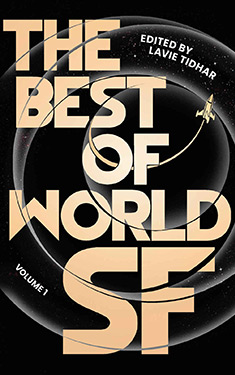
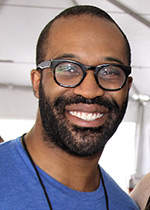
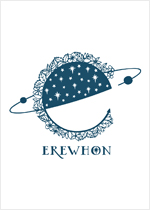
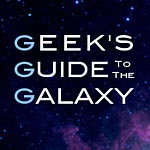

 Full Details
Full Details

